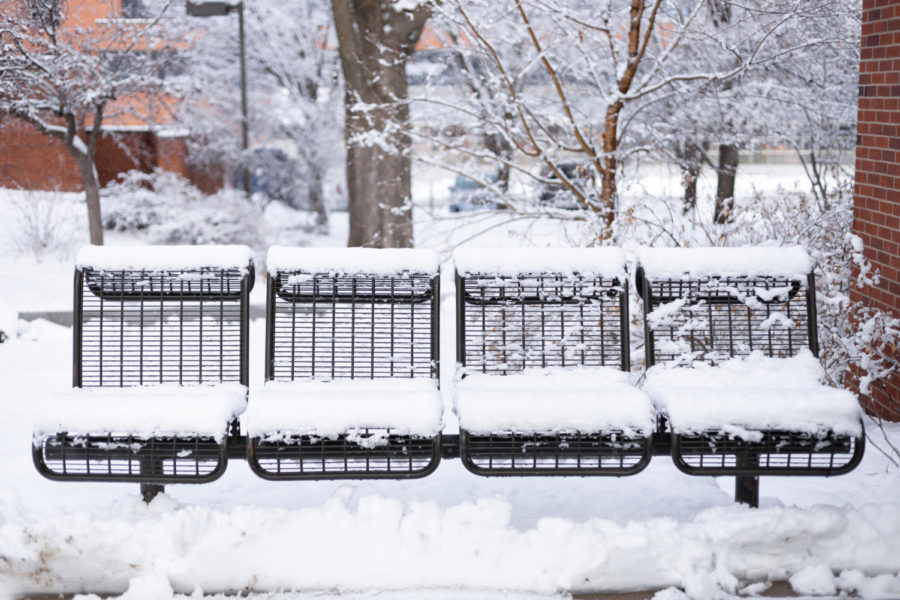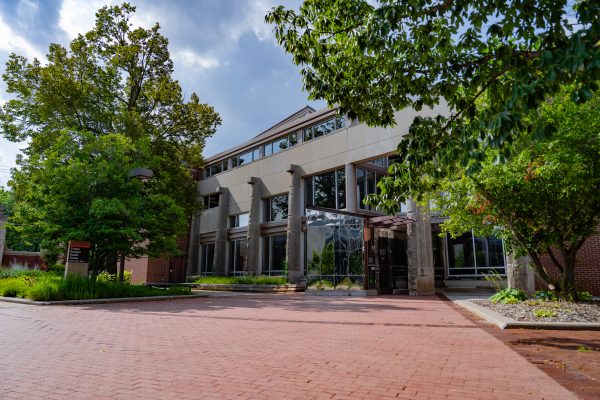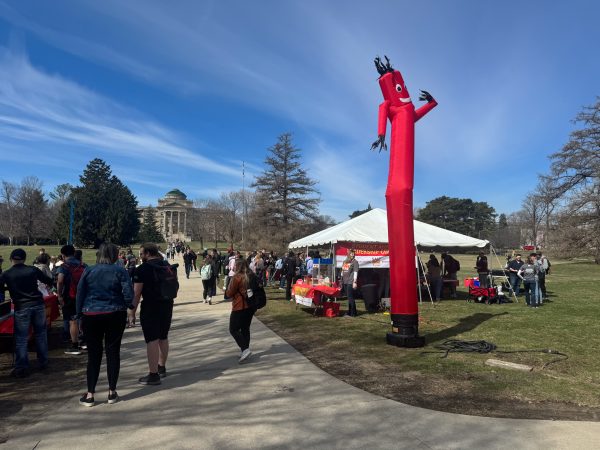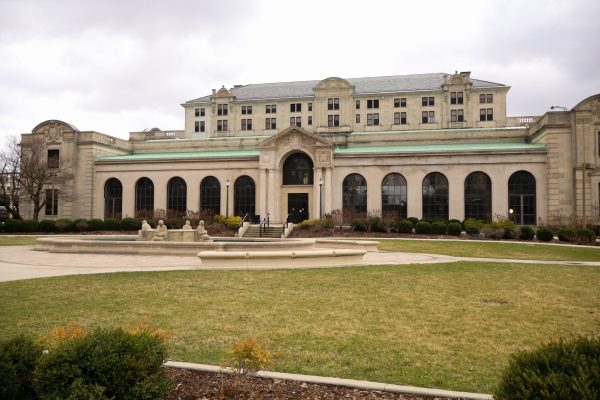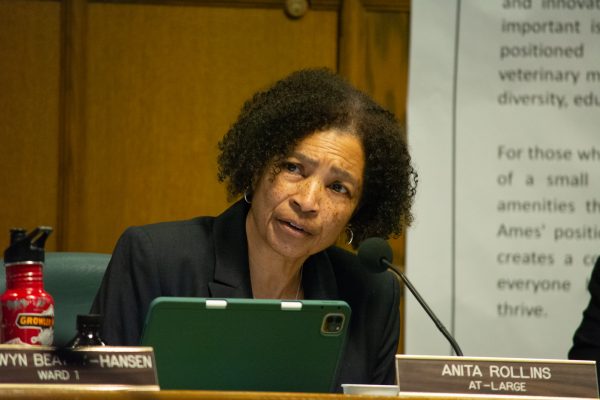Story County lacks warming center while shelter battles overcapacity
Snow covers the outdoor seating in front of Hamilton Hall, Jan. 19.
A lack of warming centers and adequate shelter for the homeless in Story County have caused initiatives between public and private human service to aid those experiencing homelessness in Ames.
The Bridge Home is a non-profit organization devoted to bridging the gap between homelessness and housing by providing shelter, support and inspiring a pathway forward for individuals and families experiencing or on the verge of homelessness according to their website.
Jodi Stumbo, president and CEO of the Bridge Home, said there are no warming centers throughout Story County.
“I’ve been throwing the idea out for a couple of years trying to see, you know, could we do something in the city gym, is there an open building, [but we] have not got that going yet,” Stumbo said.
While the Ames Public Library is listed as a warming center on the Iowa 211 website, Sheila Schofer, director of the library, said the library is not a formal warming center but is used as such by community members due to their hours of operations and amenities such as: coffee, bus passes and personal care kits.
Schofer added all of the aforementioned amenities are available to any resident in need, with most of them being able to be accessed without assistance from library staff.
Stumbo said at the Bridge Home, they have 11 beds for men and six for women. She said their largest demographic of clients are families, who they have to provide with motel rooms.
“What happens is we either try to open up more motel rooms for a storm, but that is not an economical solution– $60 per night adds up really quick,” Stumbo said.
According to The Bridge Home’s fiscal year 2022 annual report, they served a total of 3,750 individuals– a 56% increase from the fiscal year 2021.
The report continues to state that 90% of individuals served by the Bridge Home did not have to return for services.
Vanessa Baker-Latimer, the City of Ames’ housing coordinator, said the city will be using the HOME ARP funds, funds made available from the American Rescue Plan Act of 2021 and an investment partnership with from the U.S. Department of Housing and Urban Development, to help increase the number of non-congregate shelters for those experiencing homelessness.
According to the City of Ames’ website, HOME-ARP funds must be used to benefit qualifying populations defined as:
- Homeless, as defined in section 103(a) of the McKinney-Vento Homeless Assistance Act, which are defined as:
- An individual or family who lacks a fixed, regular and adequate nighttime residence.
- An individual or family with a primary nighttime residence that is a public or private place not designed for or ordinarily used as a regular sleeping accommodation for human beings, including a car, park, abandoned building, bus station, train station, airport or camping ground.
- An individual or family living in a supervised publicly or privately operated shelter designated to provide temporary living arrangements.
- Individuals or families who will imminently lose their housing, including housing they own, rent or live in without paying rent, are sharing with others, and rooms in hotels or motels not paid for by federal, state or local government programs for low-income individuals or by charitable organizations.
- Veterans and families that include a veteran family member that meets one of the preceding criteria.
- Individual or families fleeing, or attempting to flee, domestic violence, dating violence, sexual assault, stalking or human trafficking.
- Other populations where providing supportive services or assistance would prevent the family’s homelessness or would serve those with the greatest risk of housing instability.
“That would be facilities for people to stay in until they could get back on their feet; that’s more immediate then permanent supportive housing or anything like that,” Baker-Latimer said.
Baker-Latimer said the city is prioritizing providing more shelter space as opposed to providing a warming center so those experiencing homelessness can have access to reliable shelter, as opposed to the temporary shelter provided by a warming center.
“I think the goal we’re trying to have is so that they don’t have to go to centers, they can go specifically into a non-congregate shelter where they share the kitchen and share their living room, but they have a place to sleep so they can be out of the cold as well and not have to worry about, OK, this warming center is only open so many hours a day,” Baker-Latimer said.
Stumbo said that the Bridge Home received a $4.1 million National Housing Trust Fund grant which will allow them to increase their facilities.
“What we’re looking at is a three-story building that would have 18 apartments in it, varying sizes, three bedroom, two bedroom […] and families could have long term leases in there, but it also would provide us a way to get folks off of the street quickly instead of having to go through a motel,” Stumbo said.
Stumbo said some experiencing homelessness may willingly choose not to take refuge in a shelter.
“The thing about coming into shelter is it can add more trauma to the situation that the people are in because it is a bit institutional,” Stumbo said. “Yeah, there’s a curfew and those things. So some people, especially if people have problems with PTSD […] cannot come into a congregate situation.”
Stumbo said destigmatizing homelessness is a driving initiative at the Bridge Home.
“Homelessness does not discriminate. It can happen to anybody,” Stumbo said. “If you’re living paycheck to paycheck and all of a sudden you have a $3,000 medical bill or your car breaks down, you got to choose: am I gonna pay rent? Am I gonna fix the car so I can keep my job? It’s a big struggle for families.”
Your donation will support the student journalists of the Iowa State Daily. Your contribution will allow us to purchase equipment, send our student journalists to conferences and off-set their cost of living so they can continue to do best-in-the-nation work at the Iowa State Daily.


